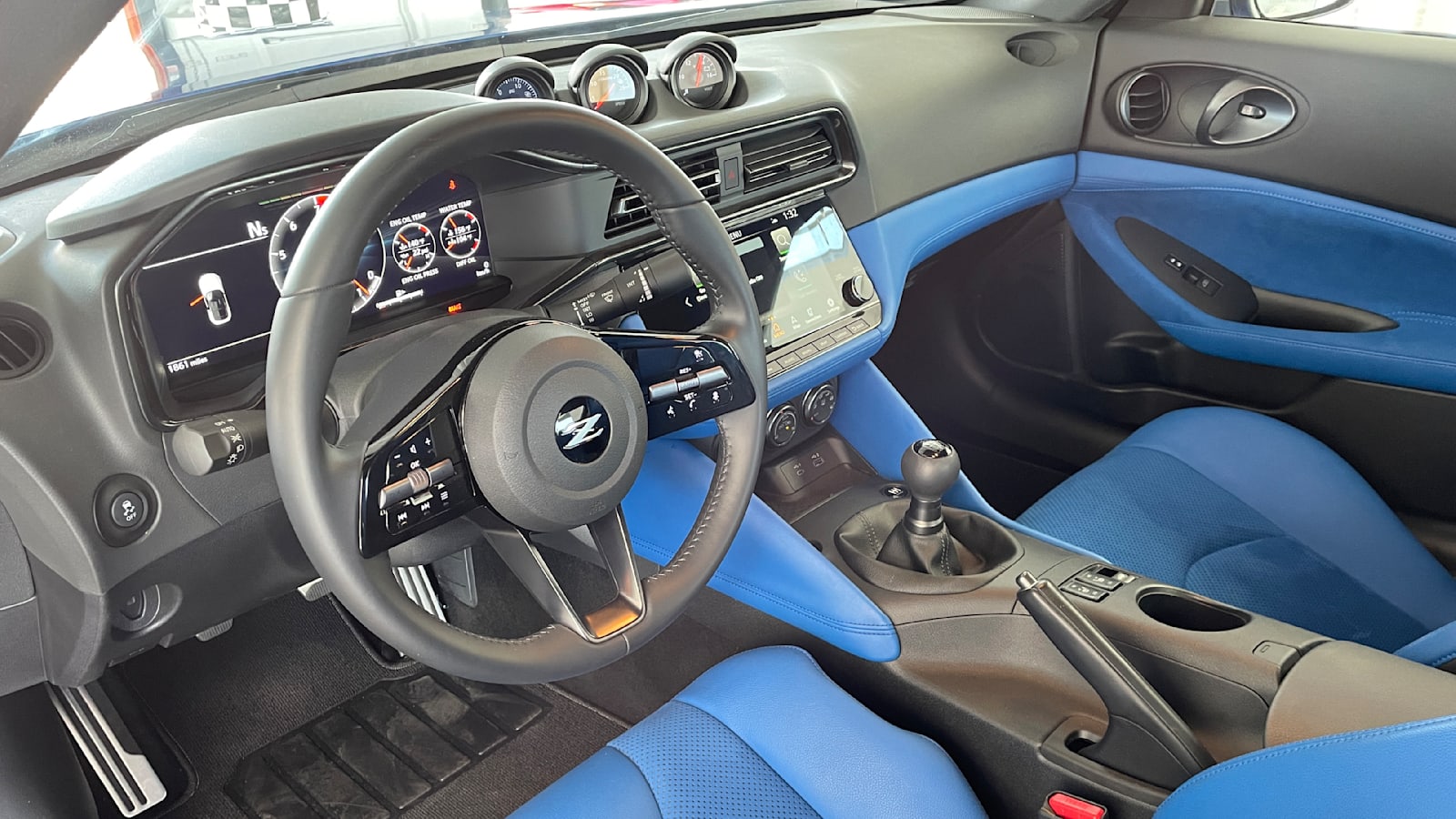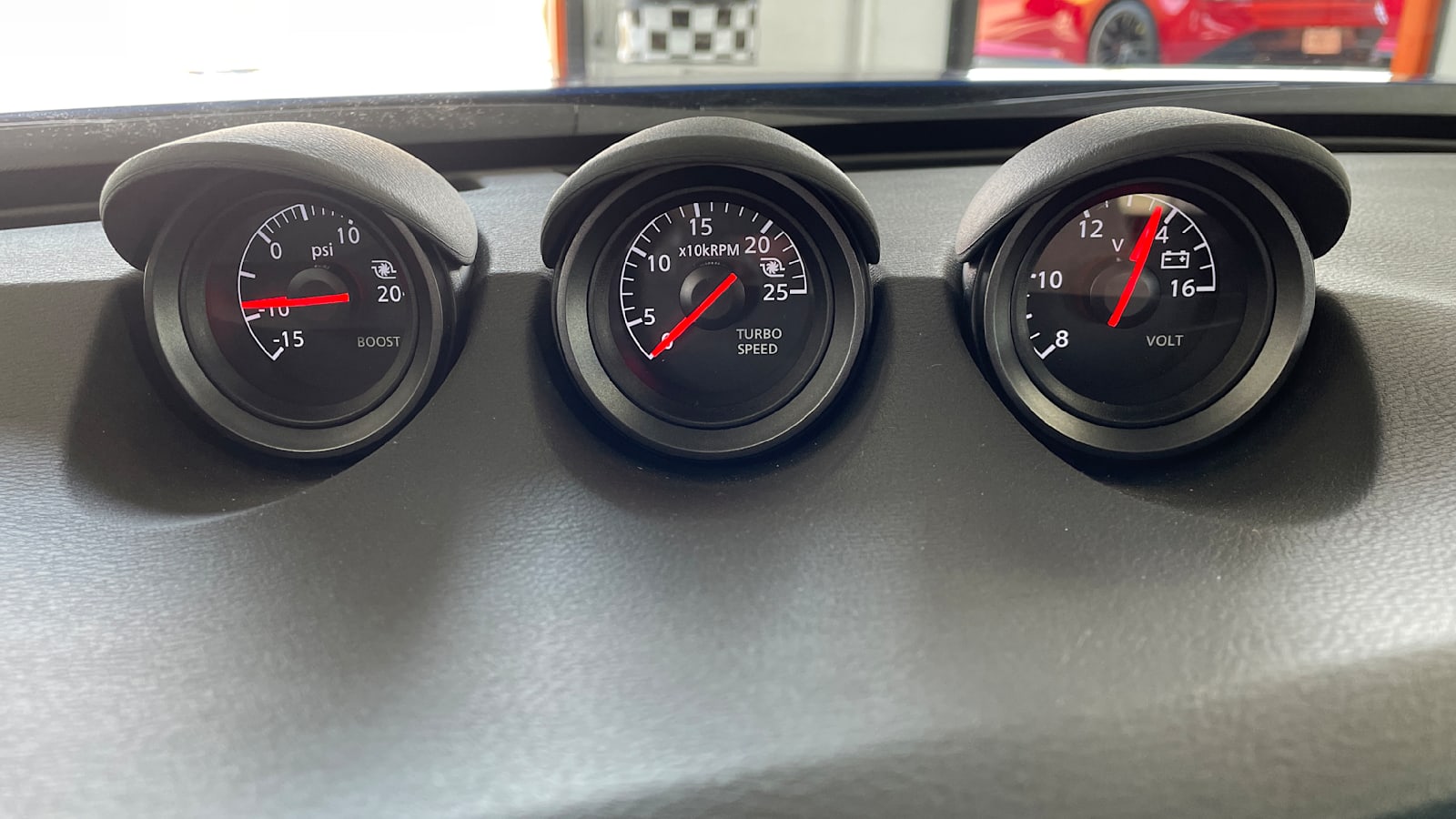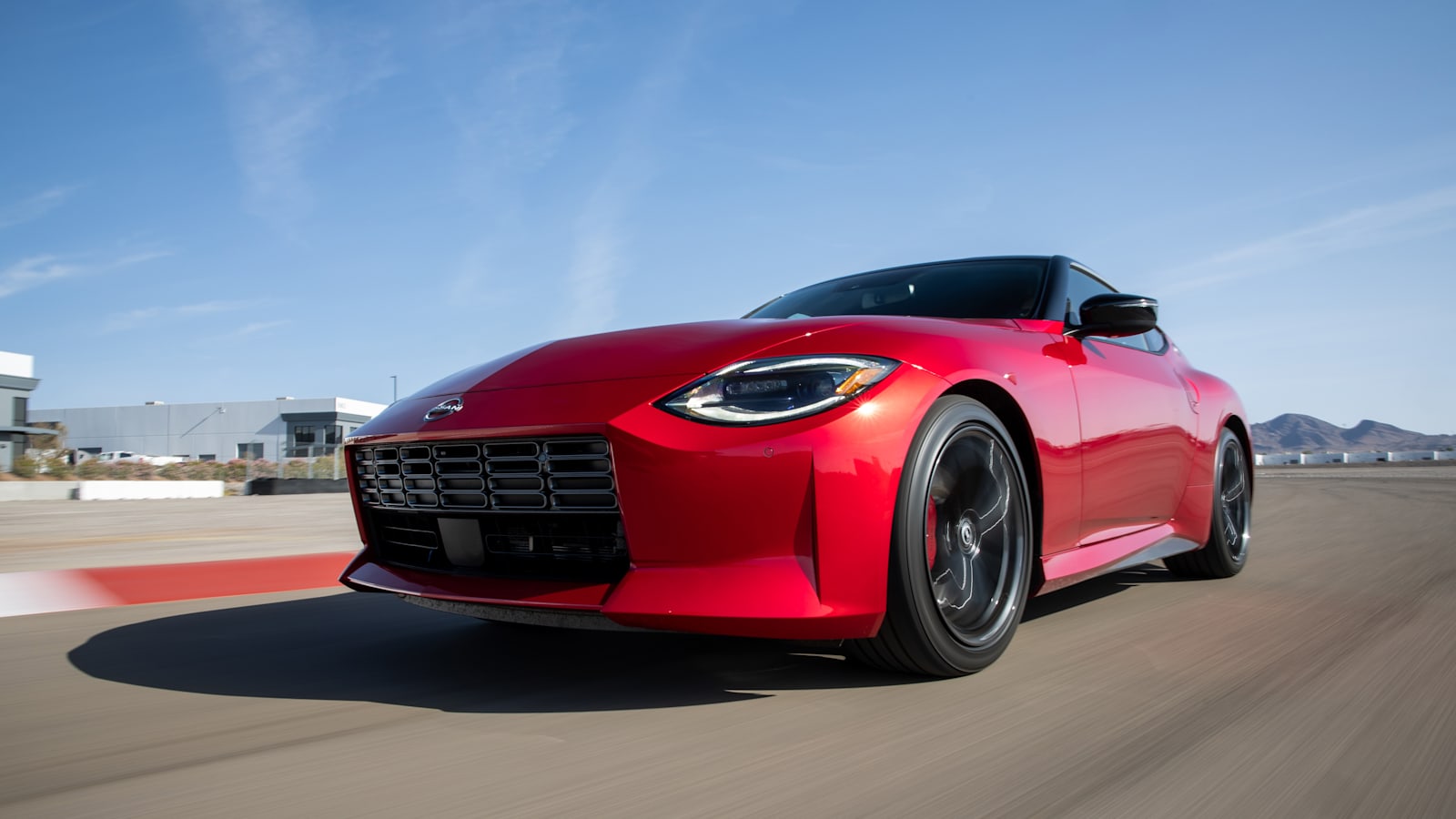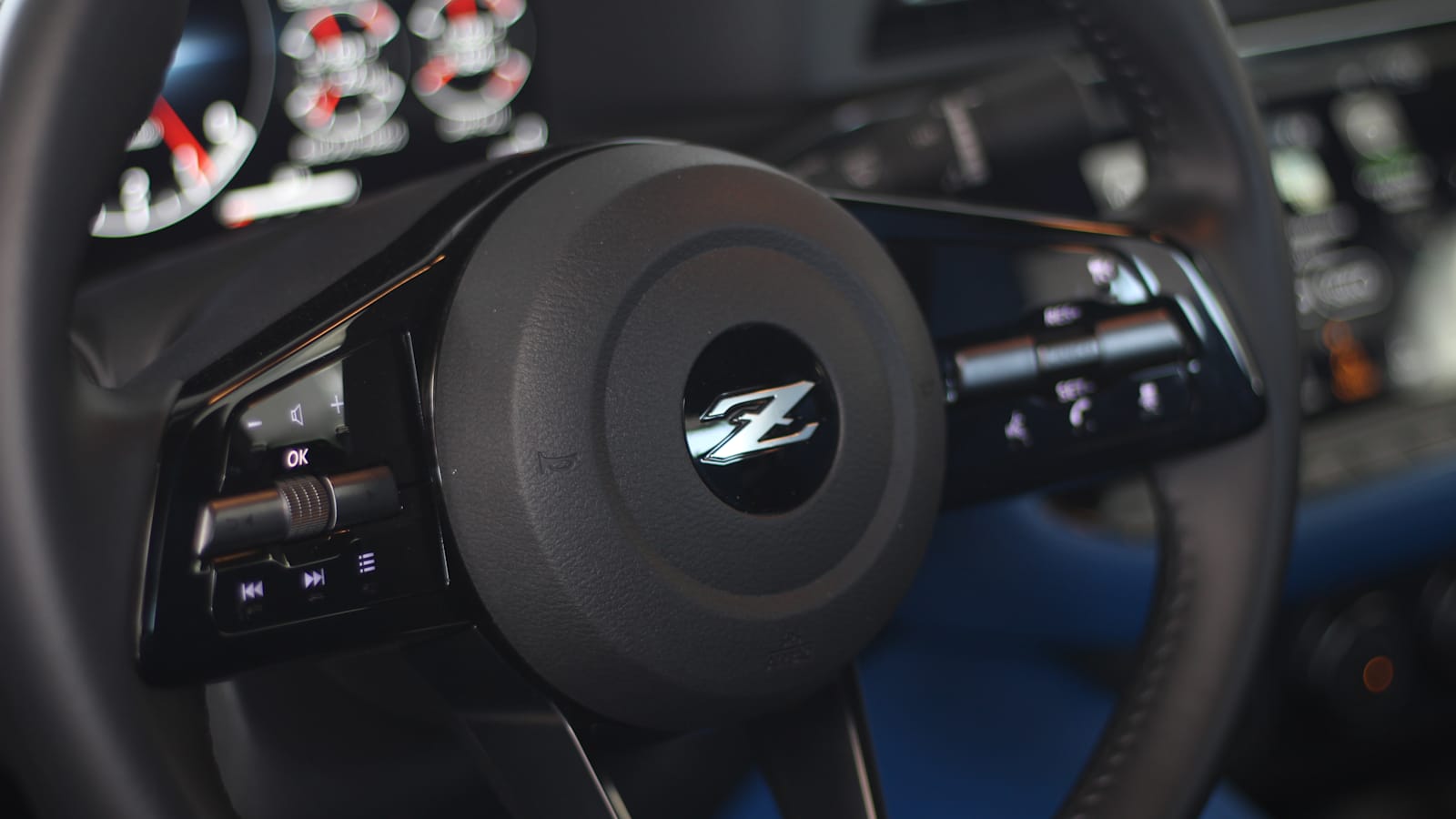2023 Nissan Z First Drive Review: The Z is back again!

LAS VEGAS, Nev. — The Japanese sports cars and sport compacts that hit the road throughout the 1990s are models that we often look back on with a nostalgic glimmer in our eyes, but hold the rad trip down nostalgia lane right there. Even if we don’t fully appreciate it in the present, we’re living in another golden age of Japanese sports cars. Either on sale or coming out soon, we have the Acura NSX Type S, Nissan GT-R, Toyota GR Supra, Toyota GR86/Subaru BRZ, Subaru WRX, Mazda MX-5 Miata, Honda Civic Si and Type R, Acura Integra and Toyota GR Corolla.
And now, you can add the new 2023 Nissan Z to the list. For far too long, Nissan let the 370Z wallow without an update. It wasn’t until 2017 – or nine years after the 370Z debuted – that Nissan started to simply formulate what the next Z would be. And now finally in 2022, we get to slide behind the wheel of a new Z car.
Las Vegas is the destination, and even in this supercar-filled area, the new Z — starting at (drum roll please) $41,015 — claims more attention than anything else. The Z’s exterior design is one of this car’s major victories, and it sets incredibly high expectations for what the two-door sport coupe will drive like. Similar to how the GR Supra instantly grabs you with its impossible curves, the new Z pulls you in right away with its classic Z shape. There is a proportional resemblance to the outgoing 370Z, but absolutely no one will mistake the new Z for the old one. From the retro LED taillights to the squared-off grille and 240Z silhouette, the new Z looks the part. And while we sincerely hope that Nissan doesn’t take 14 model years to update it again, this design is going to remain in favor for a long time.
Hiding under the 2023 Z’s sheetmetal is a big question mark. Controversially, the chassis carryovers from ye olde 370Z. Nissan didn’t just sit on its hands when developing the new Z’s underpinnings and structure, though, and we got a first-hand look at everything that’s new under the shiny bodywork. Added parts and material enhancements within the structure mean that it has 10.8% greater torsional stiffness and 23.9% more body rigidity than the 370Z. The double-wishbone front suspension is treated to an increased positive caster angle (Nissan says it improves straight line stability and steering feel), and the rear suspension was also tweaked. New passive monotube dampers replace the old twin tube dampers, in theory allowing for a more supple ride while maintaining handling capability. Plus, wider front wheels and tires provide more grip — Nissan claims 13% better performance on a skidpad.



These changes to the 370Z’s underpinnings are indeed noticeable, but there’s something else that’ll get your attention first: the new 3.0-liter twin-turbocharged V6 engine. Output looks stellar on a spec sheet, as the melodically named VR30DDTT engines makes 400 horsepower and 350 pound-feet of torque. Though also found in the Infiniti Q50 and Q60 Red Sports, the Z’s engineers decided the engine needed a little more “Z” to be fit for a focused two-door sports coupe. Most impactful is a new boost recirculation valve that ensures the turbine remains spooled even when you briefly lift off the throttle, reducing the feeling of turbo “lag.” Additionally, a new turbo speed sensor allows Nissan to more precisely measure and control the speed at which the turbine can rotate, allowing engineers to push the envelope further. Nissan even included a sweet turbo speed gauge as one of the three analog gauges on the dash top.
Predictably, the big increases in power and torque result in a car that feels significantly quicker than the outgoing 370Z. Nissan allowed us to rip off as many acceleration runs of various 2023 Zs versus the 370Z on the track, and while no official 0-60 mph time is provided by Nissan, we buy the claim that the new car is at least 15% quicker. A new launch control mode standard on automatic cars certainly helps the cause.



Engine response is also tangibly improved versus the Infiniti Red Sport models. Peak boost hits early at 1,600 rpm, but it doesn’t taper off quickly after, as Nissan is able to maintain peak torque all the way to 5,200 rpm. This results in a muscular and strong power band from bottom-to-top — peak horsepower is made at 6,400 rpm, and redline is 7,000 rpm.
Unlike the 370Z that needs revs, the new Z will have its rear end squirming around with very little effort under that tremendous amount of torque. You don’t have to try too hard to get healthy tire scratch on the second-to-third shift, and those turbos help the car remain torquey and potent even at high racetrack speeds. Speaking of, Nissan let us loose on the Las Vegas Motor Speedway to test the new Z’s limits on a track in both the six-speed manual and new nine-speed automatic.

There’s no burying the lead here — the manual is the way to go. You might think that’s an obvious conclusion for us to come to, but Nissan/Infiniti manuals have rarely been worthy of praise. The 370Z’s shifter could best be described as unrefined and notchy to the point of being a burden, but thankfully, that’s no longer the case. Nissan made some changes to the shifter mechanism and also added new conical synchros for first and second gear to improve shift feel. We’d go so far as to say that the new Z is a smooth-shifting car.
On track, it’s easy-going swapping between cogs, as we got accustomed to the manual transmission right away. Tap the rev match button, and Nissan’s “SynchroRev Match” system blips the throttle for you on downshifts. Tap once more, and you can turn it off for heel-toe work of your own.
Frankly, we still liked the way the 370Z handled despite its old age, and the new Z is a worthy successor. Not surprisingly, it’s better. The body leans a little, but with great predictably and control. Movements are kept in tight enough check that quick corner transitions don’t upset the chassis. All the extra torque means you need to be even smoother and more careful on the throttle through and accelerating out of corners (it likes to step sideways), but it’s greatly appreciated when you’re blasting down a straightaway. Throttle sensitivity could have more granularity to it, as it can be difficult to modulate when you’re trying to gradually feed in more and more torque after clipping an apex. Push the limits of grip through a long corner, and the Z rewards with a balanced chassis, not capitulating to understeer, but not coming round with dicey oversteer, either. Having even more tire than it has now would likely make it better on a racetrack, but it might be at the expense of on-street playfulness.

Our initial impression of the nine-speed auto wasn’t entirely agreeable on track. The transmission falls from the same family as the Frontier’s and Titan’s nine-speed auto, so it shares many of those guts. However, Nissan has modified it for use in a sports car, giving it a weight-saving magnesium case, a new centrifugal pendulum absorber and entirely new tuning. You can control it via paddle shifters that are ripped right from the GT-R, which is a good thing. When left to its own devices in “Sport” mode on track, it’s smart enough to hold gears and to downshift upon braking. However, it’s not the smoothest of automatics, and some uncouth shifts manage to upset the car mid-corner and interrupt your flow. Your best bet is to stick it in manual mode to get full control of when you make every shift.
On the road, this automatic in manual mode is a solid performer. It’s not as quick or crisp as the Supra’s ZF eight-speed, but you can genuinely have a good time tapping away at the paddles and getting quick responses. And you’ll need to. Sport mode isn’t as talented away from the track when you’re not constantly flogging the accelerator at speeds that would be very extra-legal out in the real world. It upshifts too frequently out of the happy zone before you want it to – other performance-oriented automatics do a better job of avoiding this. As it stands, you’ll need manual mode to make the most of the automatic Z.
It’s now that we can tell you virtually all of our impressions of the new Z are of the Performance model. It’s the higher-performance model of the two available (hence the name), as the base model is simply called “Sport.” With the “Performance,” Nissan adds larger brakes, a mechanical limited-slip differential, 19-inch Rays wheels with wider tires, SynchroRev Match for the manual and a rear spoiler that facilitates a higher top speed. It adds other niceties, too, including leather/heated/power seats, the 9-inch touchscreen (upgrade over the 7-inch screen) and a Bose audio system. For all of that, you pay $10,000 more than the base Sport, making the Performance model $51,015 — the manual and auto are the same price — including the $1,025 destination fee. At that price, the GR Supra 3.0 becomes a consideration.




Thankfully, the Z’s interior can back up its price now. It’s heavily revamped, even though carryover bits like the awkward seat controls, door handles and some air vents are exactly the same. The digital gauge cluster has an excellent unique-to-Z display that prioritizes the tachometer front and center, and it provides a number of gauge displays not represented in the three analog gauges on the dashtop. Plus, the new infotainment system vitally supports Apple CarPlay and Android Auto no matter which size screen you get.
Perhaps the most important interior change of all is the addition of a telescoping steering wheel. Nissan says it expands the height range of folks who can comfortably drive the car, claiming that people up to 6-foot 3-inches can now comfortably and naturally fit in the cabin.

At its base price of just $41,015, the Z has the potential to find a lot of butts, and rightfully so. This is a lot of car for the money. Plus, we can finally say that the Nissan Z is a sports car without any major weaknesses or glaring reasons to pass it up for something else. It even has a wide suite of driver assistance systems available, including on manual-equipped cars, so you’re not on the back foot versus other modern cars if you want to use it as a daily driver. That said, the ride is still on the stiff side of things — adaptive dampers would be a good solution — and the cabin is still far from quiet.
Our advice: Choose the manual in Performance trim if you can swing it. While the automatic is far more serviceable and fun than it was previously, other cars offer much more engaging and entertaining drive experiences. And finally, do yourself a favor and order yours in Seiran Blue with the blue interior. This is a car that deserves to be a little ostentatious.
Related video:



